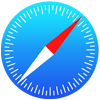Cislunar Position Navigation and Timing
Create and release your Profile on Zintellect – Postdoctoral applicants must create an account and complete a profile in the on-line application system. Please note: your resume/CV may not exceed 2 pages.
Complete your application – Enter the rest of the information required for the IC Postdoc Program Research Opportunity. The application itself contains detailed instructions for each one of these components: availability, citizenship, transcripts, dissertation abstract, publication and presentation plan, and information about your Research Advisor co-applicant.
Additional information about the IC Postdoctoral Research Fellowship Program is available on the program website located at: https://orise.orau.gov/icpostdoc/index.html.
If you have questions, send an email to ICPostdoc@orau.org. Please include the reference code for this opportunity in your email.
Research Topic Description, including Problem Statement:
With the expansion of space operations to the Cis-lunar domain, The Department of Defense (DoD) and the National Geospatial-Intelligence Agency (NGA) has a need to determine and solicit ideas and software for orbit propagation models far above the geosynchronous orbit region, where lunar perturbations are not properly modeled by DoD/NGA tool suites. The incorporation of NASA high fidelity models, which are computationally fast/efficient, can be used for potential DoD/NGA taskings. Coordinate transformation schema for the Cis-Lunar, Lunar and Trans-Lunar environments to ensure Positioning, Navigation, Timing (PNT) and targeting are a prime focus of this effort.
Example Approaches:
Software tools such as the NASA Goddard Space Flight Center’s (GSFC) open source General Mission Analysis Tool (GMAT) is used as the reference for both mathematical specifications and application. Transformation representations must accommodate accurate navigation for assets within all three environments (Cis-Lunar, Lunar, Trans-Lunar). Coordinate systems/transformations should provide improved accuracies using inertial navigation systems as in a terrestrial environment. NGA requires academic subject matter experts (SMEs) in lunar and cis-lunar trajectory guidance and navigation. In addition, the program requires navigation and time correction and maintenance algorithms and simulation software.
Relevance to the Intelligence Community:
This work will aim to improve Space Domain Awareness and satellite tracking & PNT solutions from the GEO belt out to the region of the Moon, also called the “cislunar” region. Currently, the analytics and observational hardware for determining orbits of satellites above GEO are inaccurate and they get worse as one moves further away from the Earth.
In accordance with NGA's Space requirements tasked in Q4FY2019 via the Administration's Space Policy Directive-4 (SPD-4) and the House Mark on the NDAA FY21, this solicitation will assist in evaluating and prototyping NGA's solutions for establishing space domain awareness within the orbit of the Moon, architecting cislunar PNT, as well as initiating lunar surface intelligence, surveillance, and reconnaissance (ISR).
This project addresses all the mission imperatives:
- PNT & targeting: We aim to improve PNT and targeting in the cis-lunar region, a region of increasing interest to SPACECOM and the Space Force.
- Accelerated Tasking Orchestration: Currently the Space Surveillance Network has communication weakness and gaps, especially above the GEO belt that we will to improve collection tasking and orchestration
- Analytic Workflow Modernization: The current architecture of the Space Surveillance Network is highly antiquated as it is based on 1960s-era processing. As part of our work to improve the analytics of orbit determination above GEO we will aim to improve and modernize the workflow.
- Data Access and Integrity: Closely related to the above issue, the 1960s’ heritage of the Space Surveillance Network has caused issues with data access and integrity. These are related to the multiple computer systems used at various classifications and the consequent lack of alignment and roadblocks to data access and data flow.
Key Words: Cislunar, Position, Timing, Navigation, Lunar, Trans-Lunar, NASA, Terrestrial, Space, Satellites, GEO
Postdoc Eligibility
- U.S. citizens only
- Ph.D. in a relevant field must be completed before beginning the appointment and within five years of the application deadline
- Proposal must be associated with an accredited U.S. university, college, or U.S. government laboratory
- Eligible candidates may only receive one award from the IC Postdoctoral Research Fellowship Program
Research Advisor Eligibility
- Must be an employee of an accredited U.S. university, college or U.S. government laboratory
- Are not required to be U.S. citizens
- Citizenship: U.S. Citizen Only
- Degree: Doctoral Degree.
-
Discipline(s):
- Chemistry and Materials Sciences (12 )
- Communications and Graphics Design (2 )
- Computer, Information, and Data Sciences (17 )
- Earth and Geosciences (21 )
- Engineering (27 )
- Environmental and Marine Sciences (14 )
- Life Health and Medical Sciences (45 )
- Mathematics and Statistics (10 )
- Other Non-Science & Engineering (2 )
- Physics (16 )
- Science & Engineering-related (1 )
- Social and Behavioral Sciences (27 )

 ORISE GO
ORISE GO

The ORISE GO mobile app helps you stay engaged, connected and informed during your ORISE experience – from application, to offer, through your appointment and even as an ORISE alum!





